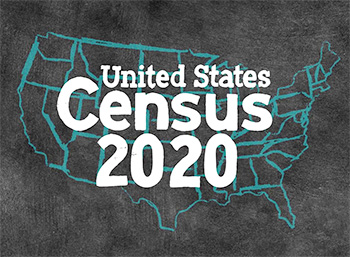By Jim Ellis — Thursday, March 9, 2023
President
 Census Reapportionment: The Hidden Votes — Already, the 2024 presidential race has actually gotten closer. The 2020 national election was decided by a 74 electoral vote margin, a 306-232 margin for Democrat Joe Biden. Without any state changing its 2020 outcome, however, his victory spread has now decreased to 68 EVs.
Census Reapportionment: The Hidden Votes — Already, the 2024 presidential race has actually gotten closer. The 2020 national election was decided by a 74 electoral vote margin, a 306-232 margin for Democrat Joe Biden. Without any state changing its 2020 outcome, however, his victory spread has now decreased to 68 EVs.
Census reapportionment is the reason, and it makes a net six-vote difference in the Republicans’ favor based upon Donald Trump’s aggregate EV number from the last election. This is because reapportioning the number of US House seats throughout the country affects and changes the electoral vote count (EVC). As you know, the EVC is comprised of each state’s federal representatives, meaning two senators and the number of House members each entity possesses.
Therefore, under the new totals, Biden’s winning count over his Republican opponent would be 303-235. Understanding that the presidential winner needs 270 electoral votes, the Republican deficit is now 35 as opposed to 38. This is important because it changes the number of states that Republicans must convert in order to win the next race.
President Biden loses electoral votes in California, Illinois, Michigan, New York, and Pennsylvania, but gained two back in Colorado and Oregon. The first five lost a congressional seat apiece in reapportionment, while the latter two gained a district apiece. Conversely, the next Republican nominee would gain electoral votes in Texas (2), Florida, Montana, and North Carolina, but lose one apiece in Ohio and West Virginia. Thus, the Republicans gained an aggregate three electoral votes while the Democrats lost three, for the net swing of six.
For the next Republican nominee, he or she must again re-establish the party’s southern core. Former President Trump needed to carry the southern tier states of Arizona, Texas, Georgia, North Carolina, and Florida to position himself throughout the rest of the country. He failed to do so, losing Arizona and Georgia, but the next nominee must return these two entities to the GOP column if the party is to have any chance of again winning the White House.
If the next Republican nominee fails to take these two states, for a total of 27 electoral votes (Georgia 16; Arizona 11), there is no realistic chance of cobbling together a 270-vote victory coalition. The GOP nominee will need at least one more state to convert in addition to Arizona and Georgia, with Wisconsin’s 10 votes being the simplest numerical path to an outright state coalition victory.
There is one more minimum winning scenario for Republicans without carrying Wisconsin or any other Biden state holding more than six electoral votes. Under this newly introduced scenario, the GOP nominee must again carry Arizona and Georgia. Once that is accomplished, a combination of converting Nevada and Nebraska’s 2nd Congressional District would allow the party nominee to reach 269 votes, tying him or her with President Biden.
Remember, Nebraska and Maine allow their congressional districts to individually carry an electoral vote. In 2022, President Biden won the 2nd District of Nebraska, which is the Omaha-anchored district that Rep. Don Bacon (R-Papillon) represents, to give him an extra electoral vote even though Trump carried the rest of the state.
Conversely, the former president carried the 2nd District of Maine, which Rep. Jared Golden (D-Lewiston) represents, thus giving him an extra vote even while Biden was claiming the statewide vote and Rep. Chellie Pingree’s (D-North Haven/Portland) 1st CD.
An Electoral College tie would force the election into the House of Representatives where the members who will win seats in the 2024 election would decide the presidential contest with each state delegation being worth one vote.
In the current Congress, the Republicans control 26 delegations and the Democrats 23, with Minnesota and North Carolina featuring tied contingents, meaning Republicans and Democrats holding the same number of seats within the delegation (MN: 4D-4R; NC: 7D-7R). Therefore, the succeeding congressional elections could also be determinative in choosing the next president, since many delegations are close enough to change their partisan complexion.
